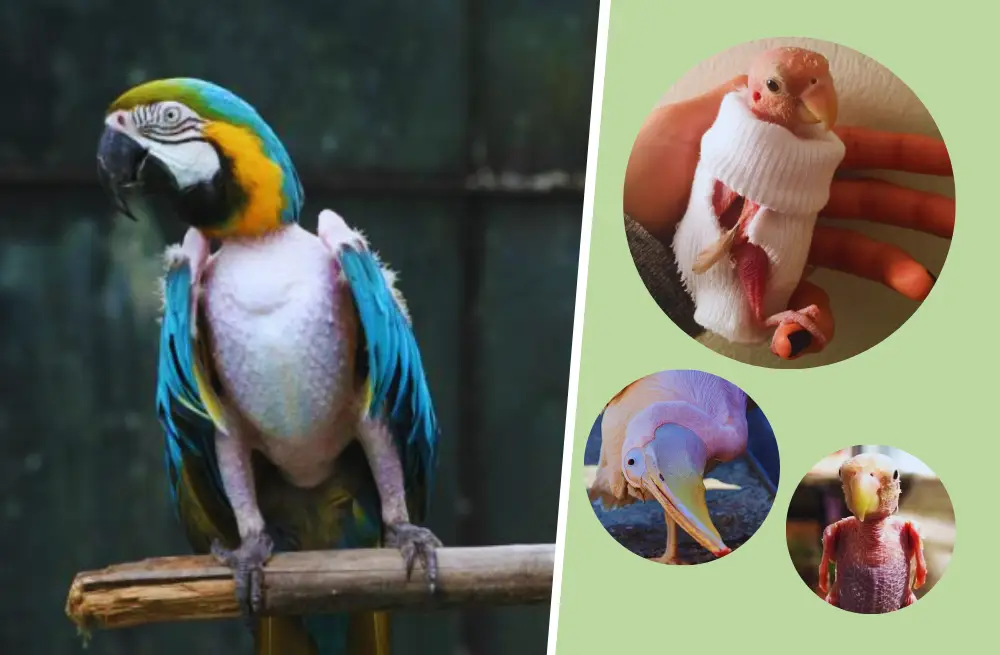Sugar gliders have gained popularity as exotic pets due to their small size, adorable appearance, and unique characteristics. These tiny marsupials are native to Australia and parts of Indonesia, and they possess squirrel-like bodies covered in gray fur with distinctive black markings.
One of their most fascinating features is their gliding membrane, a thin, skin-like structure that stretches from their front to back limbs, enabling them to glide effortlessly between trees.
If you’re considering a sugar glider as a pet, it’s important to understand the level of care and commitment they require. These playful and social creatures need regular handling to stay tame, along with plenty of space for exercise and exploration. Additionally, their dietary needs are highly specific, which demands careful attention.
However, it’s essential to note that sugar gliders are not recommended for inexperienced pet owners. Before bringing one into your home, invest time and effort into learning about the species and their unique requirements.
Be prepared to dedicate multiple hours each day to properly care for your sugar glider and provide them with the attention they need.
Should You Own a Pet Sugar Glider?
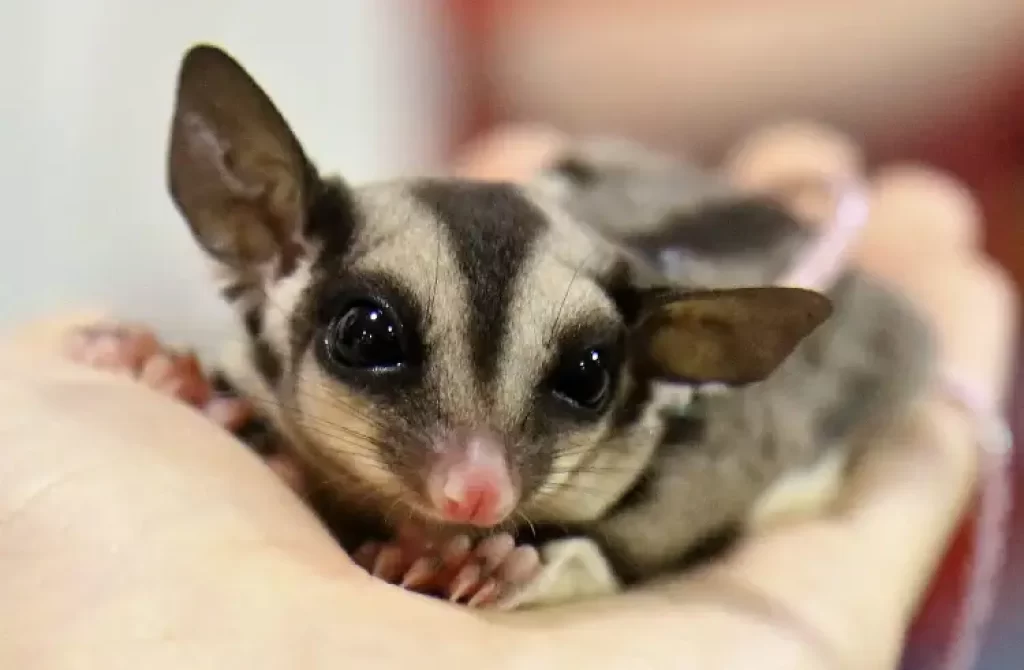
Before deciding to own a sugar glider as a pet, there are important considerations to keep in mind. In this section, we will discuss the legality, ethics, and practical aspects of owning a pet sugar glider.
Legality
It is crucial to ensure that owning a sugar glider is legal in your area. While they are legal in many states, some states such as Alaska, Hawaii, and California have specific regulations prohibiting their ownership. Additionally, local laws may vary, and permits may be required in certain locations.
To determine the legality of owning a sugar glider, it is recommended to consult the UDSA’s APHIS website or contact local authorities for specific information in your area.
Ethics
Sugar gliders are highly social animals that require a significant amount of attention, activity, and a spacious living environment. Many experts argue that keeping sugar gliders as pets may not be ethically responsible due to the potential for the animals to suffer if their needs are not adequately met. Sugar gliders are known to be prone to depression and anxiety if they do not receive proper care and stimulation.
Things to Consider
Before bringing a sugar glider into your home, carefully consider the following factors:
a. Environment: Sugar gliders require a large and vertically-oriented enclosure with plenty of space for climbing and gliding. Can you provide such an environment in your home?
b. Socialization: Sugar gliders are social animals and should ideally be kept in pairs or small groups to prevent loneliness and promote their well-being. Can you commit to adopting at least two sugar gliders to ensure they have companionship?
c. Financial and Time Commitment: Owning sugar gliders requires financial resources to provide appropriate housing, veterinary care, and a nutritionally balanced diet. Additionally, sugar gliders need daily interaction and playtime. Can you commit the necessary time and financial resources to care for them properly?
d. Veterinary Care: Sugar gliders have specific health needs, and it is essential to have access to a veterinarian with expertise in exotic marsupials. Ensure you have a qualified veterinarian nearby who can provide appropriate medical care when needed.
Considering these factors will help you make an informed decision about whether owning a pet sugar glider is suitable for you and your ability to meet their unique needs.
Remember: Responsible pet ownership requires a commitment to providing a suitable environment, socialization, and regular veterinary care for the well-being of the animal.
Potential Challenges: Specialized Care and Veterinary Needs
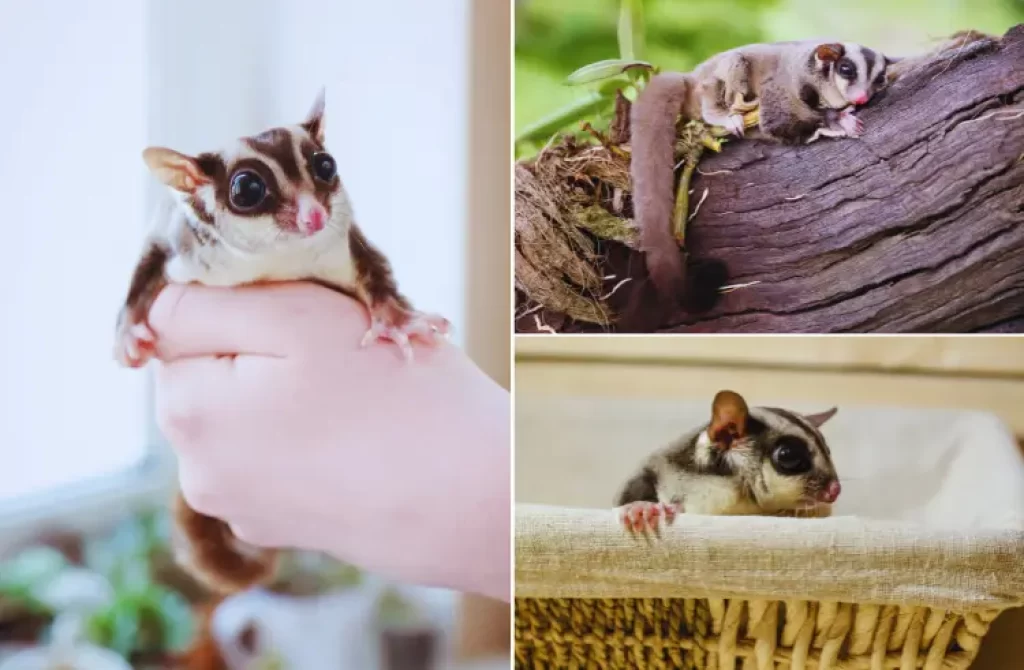
Caring for sugar gliders involves understanding their unique needs and potential health concerns. As exotic pets, they require specialized care and attention to ensure their well-being. It is crucial to be aware of these requirements and establish a relationship with a veterinarian experienced in treating sugar gliders.
Dietary Considerations
Sugar gliders have specific dietary needs, as they require a balanced diet consisting of insects, fruits, and vegetables. Providing them with a nutritionally complete menu is essential for their overall health and vitality. It is important to offer a varied diet to ensure they receive the necessary nutrients.
Insects, such as crickets and mealworms, are a vital part of a sugar glider’s diet, providing protein and essential nutrients.
Fruits and vegetables should also be included, offering a range of vitamins and minerals. However, it is crucial to avoid feeding them foods that are toxic or harmful to their well-being. Some examples of foods to avoid include chocolate, caffeine, onions, and grapes.
Veterinary Care
Regular veterinary check-ups are crucial for monitoring the health of your sugar glider. Finding a knowledgeable veterinarian experienced in treating exotic pets, particularly sugar gliders, is highly recommended.
These professionals have the necessary expertise to provide appropriate medical care, diagnose any potential health issues, and offer guidance on maintaining their well-being.
During veterinary visits, the sugar glider’s overall health, dental hygiene, and weight will be assessed. The veterinarian may also perform fecal exams to check for parasites and recommend preventative measures. Additionally, vaccinations and spaying/neutering may be discussed, depending on the specific needs of your sugar glider.
It is essential to establish a trusting relationship with your veterinarian, as they will play a significant role in the long-term care of your sugar glider. They can offer advice on proper diet and nutrition, provide guidance on handling and socialization, and address any concerns or questions you may have.
Financial Considerations
It is important to budget for potential medical expenses when considering sugar gliders as pets. Like any living creature, sugar gliders can experience health issues that may require veterinary attention.
From routine check-ups and preventive care to addressing any illnesses or injuries, having financial resources set aside for their healthcare is a responsible approach to pet ownership.
In addition to regular veterinary care, unforeseen circumstances may arise that require immediate attention. Emergency situations, such as injuries or sudden illness, may require prompt veterinary intervention. Being financially prepared for these situations can ensure that your sugar glider receives the necessary medical care without delay.
Finding a Knowledgeable Veterinarian
When searching for a veterinarian, consider their experience and knowledge in treating sugar gliders specifically. These unique animals have distinct physiological and behavioral characteristics that require specialized care. A knowledgeable veterinarian will be better equipped to handle their medical needs and provide the most appropriate treatment.
Start by researching veterinarians in your area who have experience working with exotic pets. Seek recommendations from other sugar glider owners or local exotic pet communities. Schedule a consultation or initial visit to discuss your sugar glider’s needs and assess the veterinarian’s expertise and compatibility with your pet.
Care Requirements: Diet and Nutrition for Sugar Gliders
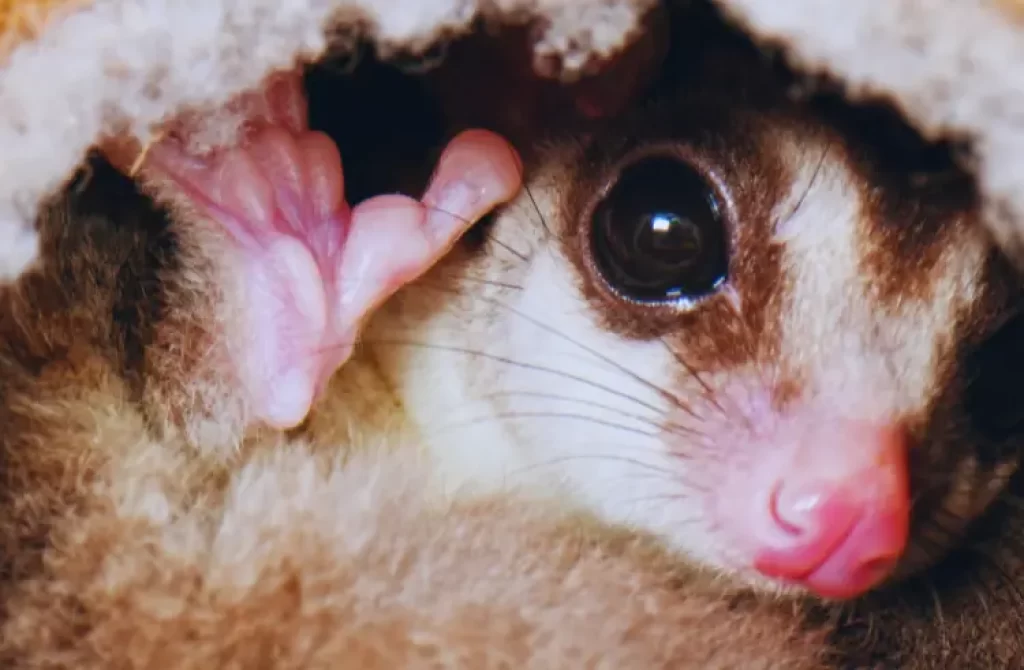
Sugar gliders have specific dietary needs to ensure their health and well-being. In this section, we will explore the key aspects of their diet and nutrition, including their preference for a balanced menu of insects, fruits, and vegetables.
Understanding Sugar Gliders’ Dietary Needs
Sugar gliders are omnivorous animals, which means they eat a combination of plant-based and animal-based foods. Their natural diet in the wild consists of nectar, pollen, tree sap, insects, and the occasional small vertebrates. It is important to replicate this varied diet in captivity to provide the necessary nutrients for their optimal health.
Importance of a Balanced Diet
A balanced diet is crucial for sugar gliders to thrive. They require a mix of proteins, carbohydrates, fats, vitamins, and minerals to meet their nutritional needs. Feeding them a diverse range of foods helps ensure they receive all the essential nutrients for growth, energy, and overall well-being.
Specialized Diets for Sugar Gliders
Some owners choose to provide specialized diets formulated specifically for sugar gliders. These diets often come in pellet or powdered form and are designed to provide a complete and balanced nutrition. It is important to follow the instructions provided by the manufacturer and consult with a veterinarian to ensure these diets meet the specific needs of your sugar glider.
Offering a Varied and Nutritious Menu
To promote a healthy diet, it is important to offer a variety of foods to sugar gliders. This includes a mix of fresh fruits, vegetables, and insects. Fruits like apples, grapes, and bananas, and vegetables such as leafy greens, carrots, and sweet potatoes can be included in their diet. Insects like crickets and mealworms are excellent sources of protein for sugar gliders.
Considerations for Feeding
When feeding sugar gliders, it is essential to provide fresh, clean food and water daily. Foods should be chopped into small, manageable pieces to prevent choking. Avoid feeding them foods that are toxic to their species, such as chocolate, avocado, and onions. Additionally, always monitor their food intake and adjust portion sizes as needed to prevent overfeeding or underfeeding.
Exercise and Enrichment: Keeping Your Sugar Glider Active and Stimulated
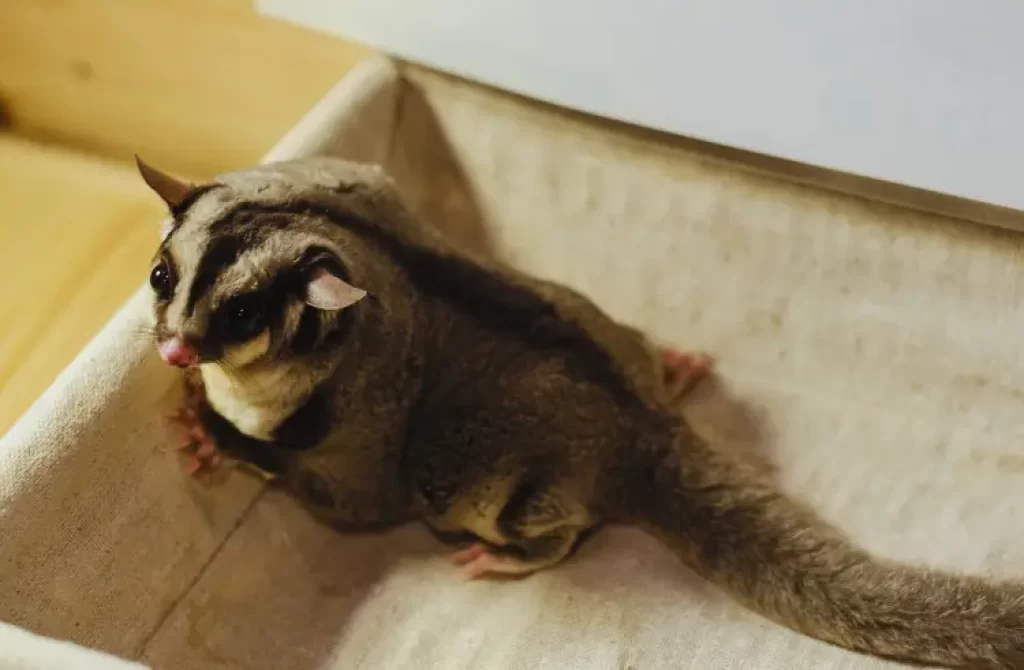
When it comes to the well-being of your sugar glider, exercise and enrichment are key aspects that should not be overlooked. These little creatures have high energy levels and a curious nature, making it crucial to provide them with opportunities for physical activity and mental stimulation.
To keep your sugar glider active and engaged, consider incorporating various elements into their daily routine. One popular option is the use of exercise wheels specifically designed for sugar gliders. These wheels allow them to engage in natural running and climbing behaviors, providing an outlet for their energy. Additionally, interactive toys such as puzzle feeders or treat-dispensing toys can offer mental stimulation while encouraging natural foraging instincts.
Regular out-of-cage time is essential for sugar gliders to stretch their legs and explore their surroundings. Creating a glider-proofed area within your home allows them to roam and play under supervised conditions. Ensure that the designated area is safe and free from potential hazards, such as open windows or toxic plants. This allows your sugar glider to enjoy supervised exploration while minimizing the risk of accidents or escape.
Remember, social interaction is crucial for the well-being of sugar gliders. Take the time to engage in interactive play sessions with your pet, using toys and gentle handling to create a bond and provide mental stimulation. These interactions not only keep your sugar glider physically active but also help nurture their social nature.
By prioritizing exercise and enrichment, you can ensure that your sugar glider remains physically fit, mentally stimulated, and content in their environment. Remember to tailor activities to suit their individual needs and preferences, and always prioritize their safety and well-being.
Related: Sugar gliders, fascinating marsupials native to Australia and Indonesia, possess a remarkable feature that sets them apart from other mammals—their pouch. Know more about it here!
Social Nature: The Importance of Companionship for Sugar Gliders
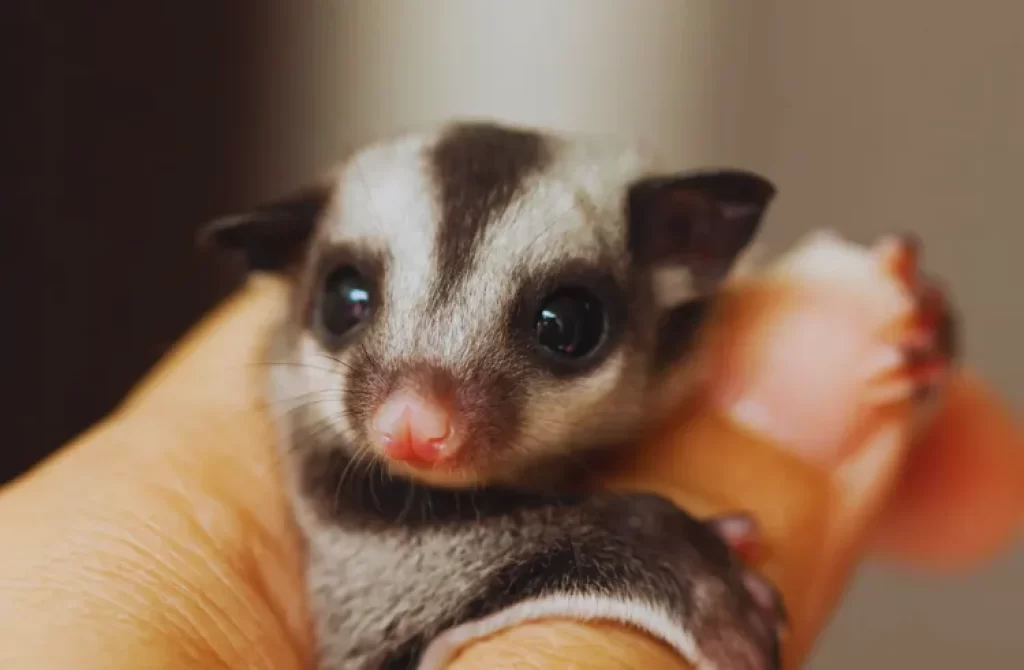
Sugar gliders are highly social creatures with a strong need for companionship. In the wild, they live in small family groups and establish strong bonds with their fellow gliders. As such, it is crucial to consider their social nature when deciding to keep them as pets.
Social Structure and Bonding
Sugar gliders thrive when they have the company of their own kind. It is strongly recommended to keep sugar gliders in pairs or small groups to ensure their well-being and prevent loneliness. When housed alone, sugar gliders can experience feelings of isolation and distress, leading to potential behavioral and health issues.
By providing your sugar glider with a suitable companion, you are helping to meet their social needs and promote a happier, healthier life. It’s important to note that sugar gliders can form strong bonds with their human caregivers, but human interaction alone cannot fully replace the companionship of another glider.
When introducing sugar gliders to each other, it’s best to start with young gliders or those of similar age and size. This allows them to establish their social hierarchy and develop strong bonds from an early age. When introducing new gliders to an existing group, it’s important to monitor their interactions closely and provide a gradual introduction to ensure a smooth transition.
It’s worth mentioning that keeping a larger group of sugar gliders requires more space and resources to accommodate their needs. Therefore, it’s essential to assess your ability to provide adequate housing, food, and care for multiple gliders before considering a larger group setup.
Bonding with Your Sugar Glider: Building Trust and Positive Relationships
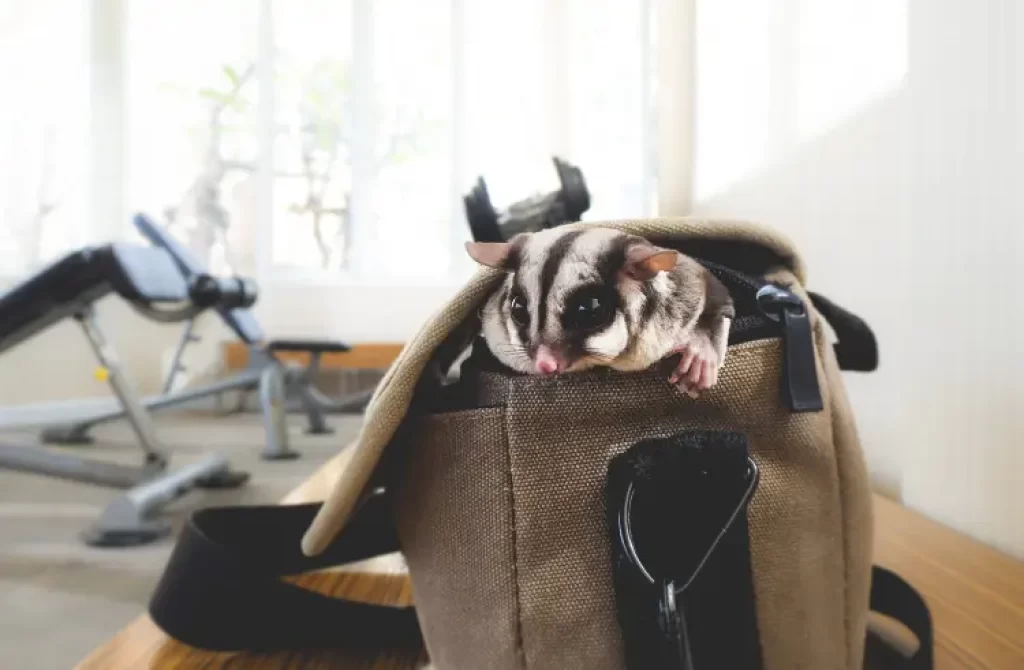
When you bring a sugar glider into your home, building a bond of trust and establishing a positive relationship with them is essential. With patience, consistency, and gentle interaction, you can develop a strong bond that will enhance your experience as a pet owner and ensure the well-being of your sugar glider.
One of the key aspects of bonding with your sugar glider is daily handling. Regular handling helps your glider become accustomed to your presence, voice, and scent. Start by allowing them to explore your hand in their enclosure, offering treats or their favorite food as a reward for their curiosity. As they become more comfortable, you can gradually progress to gently scooping them up and letting them climb on you.
Hand-feeding is another effective way to strengthen your bond with your sugar glider. Offer treats or their regular food from your hand, allowing them to approach and eat at their own pace. This activity not only fosters trust but also encourages positive associations with your presence.
It’s important to note that sugar gliders are nocturnal animals, so they are most active during the evening and nighttime hours. Adjust your schedule accordingly to spend quality time with them during their peak activity periods. This will maximize your opportunities for interaction and bonding.
Each sugar glider has its own unique personality and temperament, so it’s crucial to be patient and respect their boundaries. Some gliders may be more outgoing and eager for interaction, while others may be more reserved or shy. Allow them to dictate the pace of bonding and gradually increase the duration and intensity of your interactions based on their comfort level.
Consistency is key when bonding with your sugar glider. Establish a daily routine for handling, feeding, and playtime. This predictability helps them feel secure and builds trust over time.
Nocturnal Nature and Vocalizations: Adjusting to Sugar Gliders’ Habits
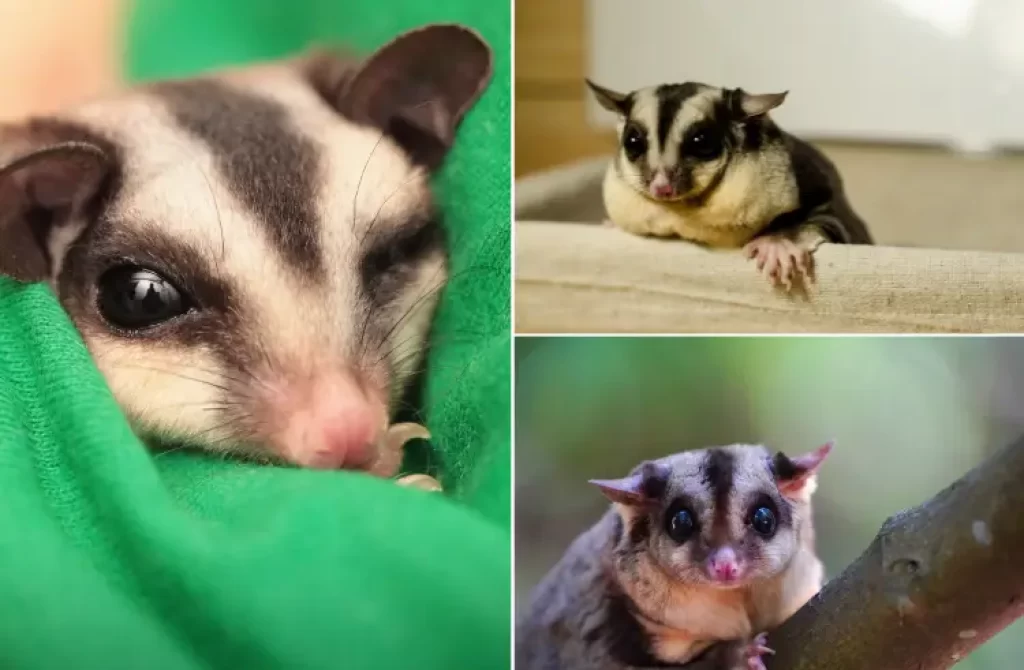
One of the unique characteristics of sugar gliders is their nocturnal nature. These adorable marsupials are most active during the night, which means they will be awake and ready for playtime when you may be ready for bed.
It’s important to understand and accommodate their natural behavior to ensure their well-being and maintain a harmonious living environment.
Adjusting your daily routine is necessary when keeping sugar gliders as pets. Consider providing them with a quiet and undisturbed sleeping area during the day, such as a covered enclosure or a dedicated room.
This will allow them to rest and conserve energy for their active hours during the night. Additionally, avoid excessive noise and sudden disruptions during their sleeping period to ensure they get the rest they need.
While sugar gliders are nocturnal, they can gradually adjust to your schedule to some extent. By providing consistent interaction and playtime during the evening and night hours, you can encourage them to be more active during times that align with your availability.
However, keep in mind that their natural instincts and behaviors will still revolve around their nocturnal nature.
Another aspect to consider when it comes to sugar gliders’ behavior is their vocalizations. Sugar gliders have a range of vocal sounds, including barks, chatters, and hisses.
These vocalizations serve various purposes, such as communication, territoriality, and expressing their emotions. It’s important to familiarize yourself with their vocal repertoire to understand their needs and feelings.
Some vocalizations, like barks, may occur when sugar gliders feel threatened, scared, or startled. Others, such as chatters, can indicate excitement or agitation. Hissing, on the other hand, is a sign of aggression or fear. By observing their body language and paying attention to their vocalizations, you can better interpret their signals and respond accordingly.
It’s worth noting that sugar gliders are generally quiet animals, especially when they feel safe and secure. Providing them with a calm and stress-free environment can help minimize excessive vocalizations. However, it’s essential to be prepared for occasional vocal outbursts and understand that they are a part of their natural behavior.
Pros & Cons of Keeping a Sugar Glider as a Pet
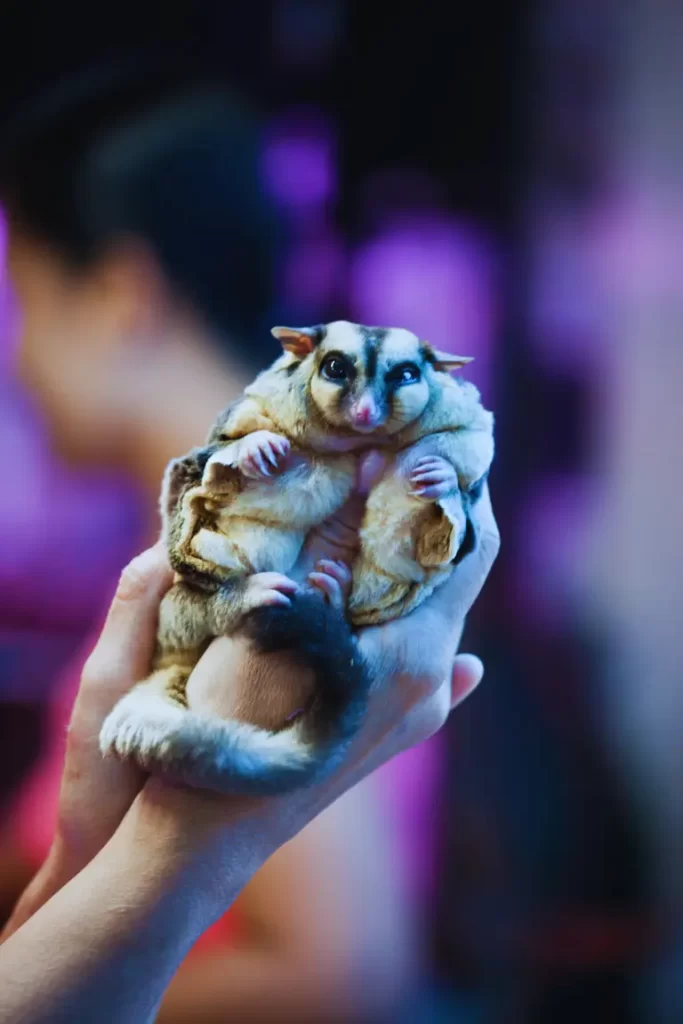
Keeping a Sugar Glider as a pet has its pros and cons. Here’s a brief overview:
Pros:
- Adorable and Active: Sugar gliders are fun and playful pets.
- Longer Lifespan: They live longer than other “pocket” pets.
- Clean and Low Odor: They groom themselves and have minimal odor.
- Rarely Bite: With proper handling, they rarely bite.
Cons:
- Social Needs: They require companionship and are best kept in pairs or small groups.
- Nocturnal Behavior: They are active at night, which may not suit everyone’s schedule.
- Limited Interaction with Other Pets: They may not interact well with other pets.
- Specialized Care: They have specific dietary and environmental needs.
Consider these factors before deciding to own a Sugar Glider as a pet.
Wrapping things up…
Keeping a Sugar glider as a pet can be a delightful experience for those who are willing to invest the time, effort, and resources to meet their unique needs. However, it is crucial to thoroughly research and understand the responsibilities and challenges associated with owning a Sugar glider before making a decision.
Frequently asked questions
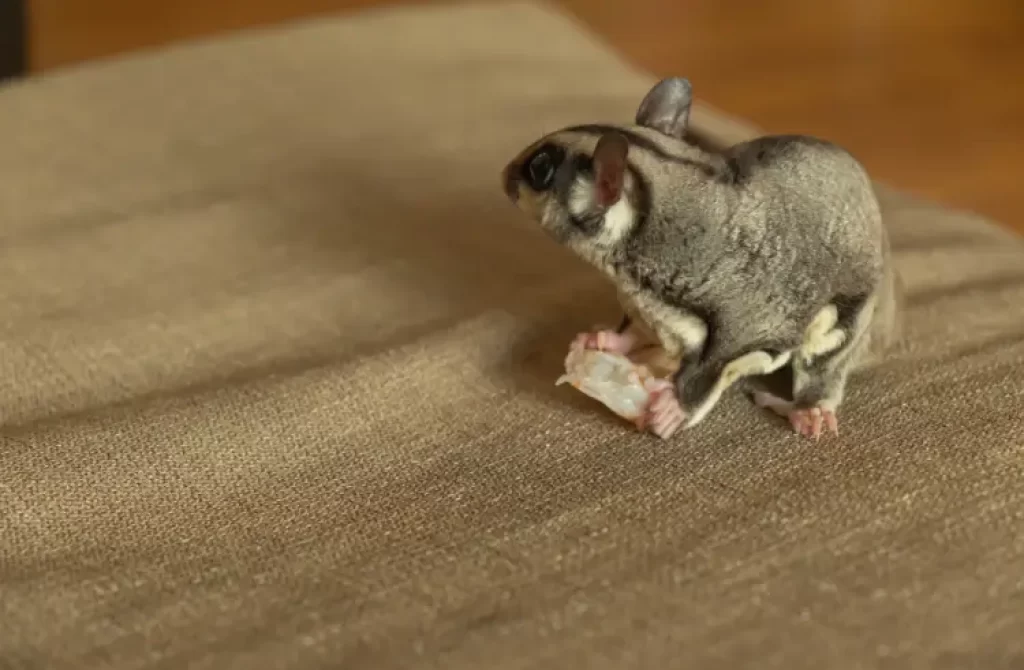
How long do sugar gliders live as pets?
Sugar gliders have an average lifespan of 10 to 15 years in captivity when provided with proper care. However, it’s important to note that individual lifespan can vary depending on factors such as genetics, diet, environment, and overall health. With good nutrition, regular veterinary check-ups, and a suitable living environment, sugar gliders can live a long and healthy life as pets.
Are sugar gliders good pets?
Sugar gliders can make good pets for the right individuals who are willing to meet their specific needs. They are social, active, and playful animals that form strong bonds with their owners.
Are sugar gliders smelly pets?
Sugar gliders do not typically have a strong or unpleasant odor if their enclosure is kept clean and their diet is balanced. However, like any pet, they may have a natural scent that is unique to their species. The smell is usually mild and not overwhelming.
Proper hygiene and regular cleaning of their enclosure, including bedding and toys, can help minimize any potential odors. Providing a clean and well-maintained environment, along with a healthy diet, can contribute to keeping your sugar glider smelling fresh.
Are sugar gliders hard to take care of?
Taking care of sugar gliders can be challenging due to their specialized diet, social needs, and nocturnal nature. They require a large enclosure, regular social interaction, and a vet experienced with exotic pets. It’s important to commit time, effort, and resources to meet their unique needs.
You might also like:
- Sugar Glider (Petaurus breviceps)
- What Do Wombats Eat?
- How Much Does a Kangaroo Eat Per Day?
- How many babies Do Sugar gliders have?




